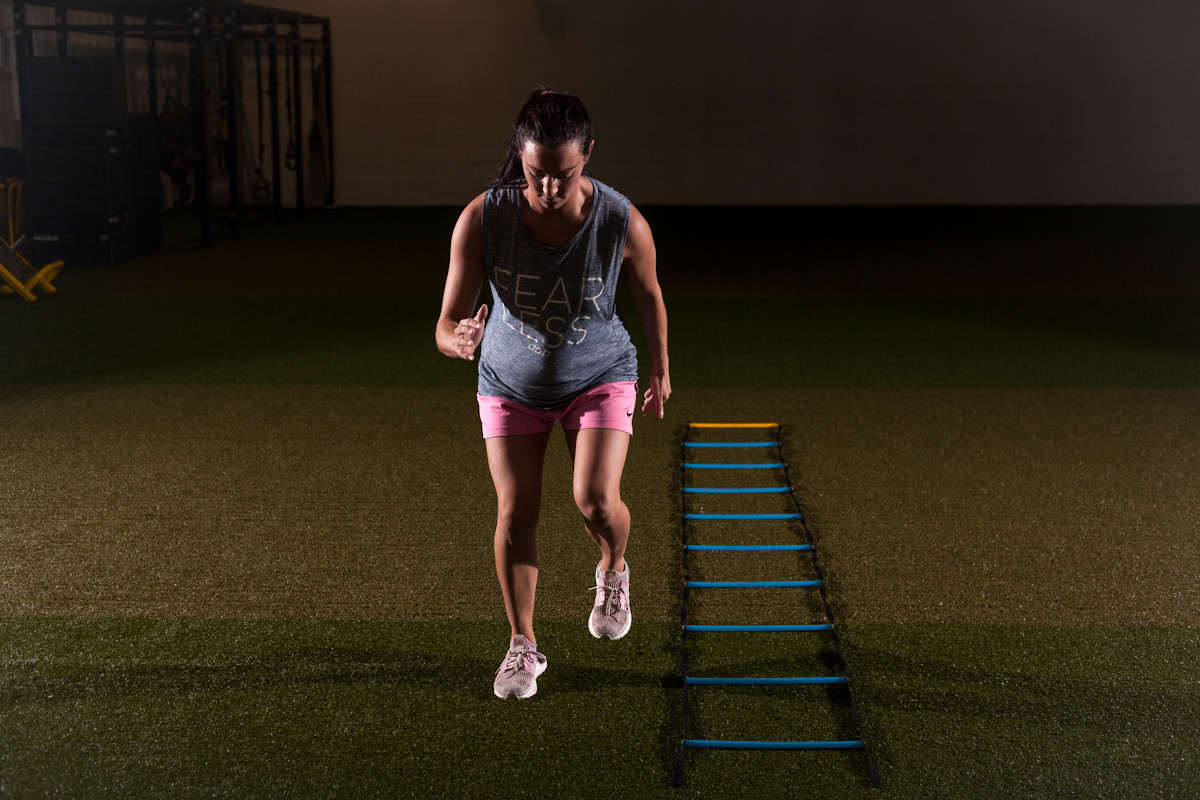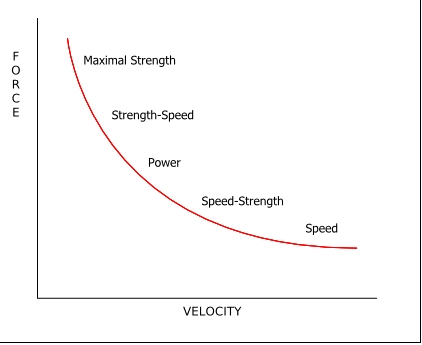
25 Nov The Five Course Meal of Soccer Performance
Bad soccer performance training is like dinner at Burger King: abruptly tossed together last minute with no thought and care.
Good soccer performance training is like a five course meal: meticulously prepared ahead time with thought and intricacy.
To that end, I’ve seen a plethora of performance coaches across the industry who manifest one of these approaches.
In one corner, there are the “Burger King coaches” who throw a workout together on a whiteboard the moment kids walk in the gym door.
It doesn’t matter if a kid has three games that weekend, it’s 100 squats, 100 burpees, and 100 box jumps for them.
It doesn’t matter if a kid has a tweaked hamstring, it’s deadlift max day.
It doesn’t matter if a kid has different body mechanics than the kid next to him, it’s the same workout for everyone.
It doesn’t matter if someone lacks mobility in their hips, recovery workouts and tissue quality movements don’t make a kid sweat enough.
Beware of the Burger King coaches who fail to periodize, customize, and build their performance programs in a multi-faceted manner.
While there are a lot of these coaches out there, this article isn’t about them.
It’s about the coaches in the industry who do an amazing job of making training a five course meal experience, and treat their athletes with great care.

So pass the h’orderves and let’s dig in on the five course meal of soccer performance:
1. Dynamic Warm-up and Mobility
To start off the meal, are you warming up your palate? This portion cannot be skipped just because it’s “too boring” or “too monotonous.”
After all, it’s the most critical part that sets up a quality, healthy workout.
Going through the motions and doing the good-old-arm-swing side shuffle will not suffice.
Jogging a nonchalant lap around the pitch in 30 degree weather is dangerous.
Static stretching before 1v1s is just stupid.
Back pedaling without low hips and shoulders will make someone fall over and be slow to get back on defense.
On a side note, here is a quick preview of a warm-up video module in Total Youth Soccer Periodization that will release in 2020:
So this begs the question: is your warm up done with intensity and purpose? I would hope so.
And are you taking your time with your stretches?
Anytime an athlete here rushes through the warm-up, they have to do it over until they get it right. Be picky with how they stretch because it could be the difference between tweaking a knee, or getting a soft tissue injury.
Beyond the runs and dynamic stretches, depending on the day, what pieces of mobility are being addressed?
As an example, if you have a speed day, are you ensuring your players are working on hip mobility with good posture and no compensation of the lumbar spine?
Or if you have an upper body day, are you working on thoracic spine mobility so they are supple for the workout and can perform explosive rotational movements?
The small things matter, and if you find mobility drills as boring as watching paint dry, then you’re sadly mistaken with how long your career will last.
Do the little things to not only improve performance, but to reduce chance of injury.
2. Activation and Movement Prep
Exciting the nervous system and preparing it for the intense movements of the day is critical. This is where the activation and movement prep comes into play.
What muscles are going to be fired the most during a change of direction and acceleration day?
Are you honing in on coordination to prepare for sprint drills?
Are you tapping into the stretch shortening cycle for an explosive day?
Are you working on forward lean posture and ball-of-the-foot loading for acceleration?
Get the nervous system ready and sprinkle in activation and movement prep exercises specific to the workout.
I would even go as far as to say the activation movements of the hips and core are great before team practices, too.
Soccer coaches have the power to execute a quality, 5-7 minute activation and movement prep that will do their players a service for a quality session, while reducing chance of injury.
Remember, the small things matter.
3. Speed and Agility
This much I know: anyone can toss out a sprint and agility drill, but can they break down the technique and get detailed with their coaching?
My mind was blown after taking Lee Taft’s NSPA Speed Course, and made me realize I had to be more meticulous in my approach to speed and acceleration training for youth athletes.

Just like soccer skills, this stuff needs to be taught with detail and repetition.
Moreover, players need to be exposed to proper technique and maximal sprinting work for the long haul. It concerns me that soccer players’ nervous systems aren’t used to over 30 yards of sprinting due to small-sided games and drills in a tight space.
And looking to agility, it concerns me that players don’t learn how to stabilize their core, maintain good posture, and knee, hip and ankle position when changing direction.
And once technique is nailed down, are they able to execute in a stressful, competitive environment?
These are just a few things to think about when prescribing speed and agility drills. Throwing cones out and blowing a whistle are not enough.
Approach speed and agility with preparation and detail. Oh, and invest in your education and check out speed coach Lee Taft.
4. Power and Strength
The blend of these two is paramount for building a resilient athlete who is strong, fast and agile.
In order to increase the amount of power production athletes must continue to develop their strength.

Yes, lift heavy things, but every now and then, lift light to moderate things fast.
A sound soccer performance plan must incorporate power work as a complement to strength work, such as medicine ball throws, plyometrics, and weighted jump variations, so players continue to build explosiveness.
5. Conditioning
The last course of the meal is where players put all of the previous courses together. Conditioning should be intense, lung burning, and challenging, but given players have worked on mobility, activation, speed, agility, strength and power, conditioning should become easy.
If players are weak and lack the mechanics to change direction efficiently, conditioning will prove hard to plow through.
Our best, strongest athletes who have been training their five course meal for years even say, “conditioning is fun.”
Conditioning for soccer must have a purpose and be game specific. Don’t program endless laps around the pitch or Indian runs just to kill time and make your players do something while you set up your practice session last minute.
This is laziness and a lack of preparation and knowledge. Yes, it’s triggering, but I urge you to be better and ask yourself these questions:
– Is my conditioning game specific?
– Is there max aerobic speed so my players stay fast and can work on sprinting mechanics within a conditioning drill?
– Is there change of direction and eccentric load?
– Are my players reaching a higher intensity and heart rate than the game?
– Am I adding in mental duress and cognitive load through small-sided games?
– Can I do my conditioning in a soccer drill (1v1s or 3v3s ), or do I need to do more speed endurance over 40 yards?
– What do my players need right now?
Don’t be lazy when it comes to designing conditioning drills. Be purposeful.
Read this article Conditioning For Soccer Players: Stop Jogging Laps for more detail on this.
Other Things
So that’s the five course meal of soccer performance. Of course, we could argue there’s dessert, like post-conditioning recovery, pool workouts, mental health and meditation and so much more, but these are a great start to developing soccer players into well-rounded athletes who can withstand the demands of the game.
And yes, the order of the meal might change, depending on the day. Some teams lift before practice. Some teams do speed work before a lift. Some teams do hip activation before conditioning. All good in my book.
To that end, the nervous system is the decider of what comes first. A rule of thumb: you’re either exciting it with low volume, explosive movements, or exhausting it with high volume movements.
Choose wisely your exercise selection sequence.

Going beyond the meal, what coach is taking care of you during this time?
Are they checking on you like an attentive waiter who is worth a 25% tip?
Are they constantly asking you how you are doing and adjusting the workout accordingly?
Yes, the quality of the meal matters, but so does the service. Performance coaches are a must for soccer players to work on physical development, but team coaches can also execute plenty of these drills on the pitch, from a solid warm up, to activation, to on-field strength workouts before practice.
I’m a big fan of team coaches who do so, and have worked with many amazing ones willing to take physical development to their practices.
Adding on, I’m a big fan of coaches who are excited and open-minded in learning about the physical piece of soccer. It’s beautiful how much our players benefit from staff collaboration.
After all, in order for a five course meal to be incredible, there is an army of servers involved – people who assist athletes in their total development.
Remember, this is the service industry, so make it a quality one.
For sample in-season and off-season workouts, speed and agility drills, and on-field strength workouts, get Total Youth Soccer Fitness.


No Comments